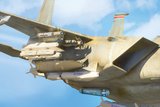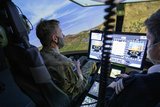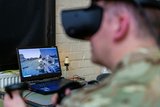Proving counter-UAS effectiveness against enemy drones (Studio)
The UAS threat is no longer a future fear but is ‘now right on us’.
Countering this danger is now a core focus for Raytheon Missiles & Defense, according to Tom Laliberty, Vice President of Land Warfare and Air Defense at the Raytheon Technologies business.
He noted that the proliferating, asymmetric threat centres on quiet and manoeuvrable platforms that come in many types and sizes and can be launched from almost anywhere, making them highly unpredictable.
UAS are a concern for national infrastructure in both the civilian and military domains, everywhere from stadiums to airports to forward operating bases.
Adversaries have demonstrated the ability to synchronise complex attacks, Laliberty warned, mixing UASs with cruise and ballistic missiles and fixed and rotary-wing aircraft.
‘When you combine all this, it can be very overwhelming to any singular defensive system,’ he said.
‘Adding cost-effective capabilities to address these threats is essential, without losing focus on the rest of the air defence mission.’
Raytheon Missiles & Defense has developed a set of enabling technologies and customisable systems for the counter-UAS (C-UAS) mission, aimed at supporting military customers and civilian authorities to defend against complex threats in a wide variety of environments.
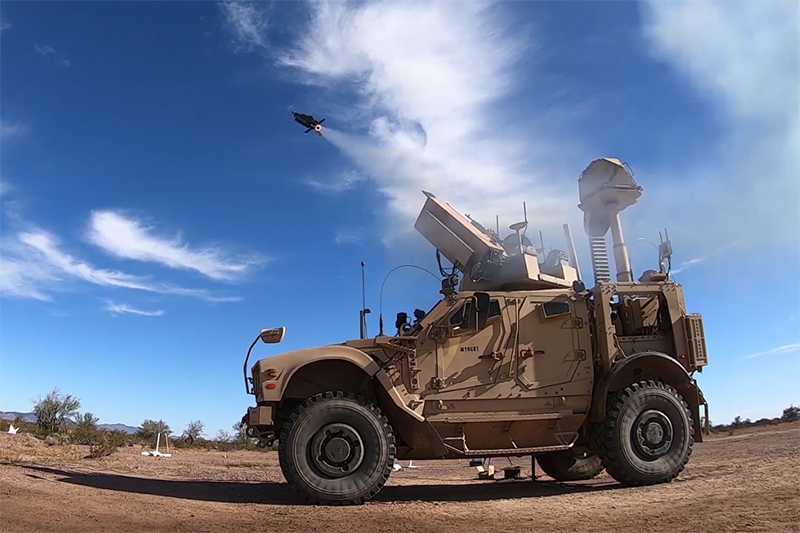
The company has integrated high-performing sensors and cost-effective kinetic and non-kinetic effectors into its solutions to address such threats as efficiently as possible, enabling customers to select the right effectors against a range of dangers.
These solutions are based mainly on two systems: the Coyote, an effector that can target adversarial UAS, and the Ku-band Radio Frequency System (KuRFS) radar, which can sense incoming drones, along with rocket, artillery and other threats.
‘With the support of the United States Army, our KuRFS radar and our family of Coyote effectors have continued to mature,’ Laliberty explained.
‘We intend to serve a great number of warfighters, across combatant commands, branches of the US Armed Services, and then, of course, our international partners as well.’
For example, Raytheon Missiles & Defense conducted a series of tests at Yuma Proving Ground in Arizona over ten days in the summer.
The tests featured both the Block 2 and Block 3 variants of the Coyote effector. Block 2 has a kinetic defeat capability, using a warhead to defeat UASs of varying sizes, while Block 3 deploys non-kinetic effects.
The testing also featured updated KuRFS software, allowing the Army to confirm the operational capability of the radar to deploy with Coyote.
KuRFS is a highly precise radar; its focus on the Ku-band allows for high-resolution imaging, particularly important for tracking small, flying objects like drones. The multimission radar provides 360-degree coverage, supporting simultaneous “sense and warn” for a wide range of threats.
‘KuRFS can quickly detect and track airborne threats launched at medium to close ranges, and with very high precision identify what the threat is and report that to the command and control structure for the prosecution of the mission,’ Laliberty said.
Raytheon also produces a scaled version of KuRFS, the Ku720, explicitly designed for mobile operations.
‘We reduced the power, the weight and the cost, enabling KuRFS to essentially be used in more mobile environments,’ Laliberty explained, ‘but using the same proven technology for surveillance, threat detection, identification and tracking.’
At the Yuma tests, Raytheon demonstrated improvements against the latest UAS tactics ‘and showed the capabilities of KuRFS and Coyote integrated together to engage at these longer ranges and higher altitudes’.
The Block 2 Coyote effector demonstrated its ability to achieve a first-pass defeat of multiple threat targets and different classes of UASs, at much longer ranges and higher altitudes than similar effectors. These improvements enable warfighters to engage at the furthest point possible, providing a safe radius for the assets they’re defending.
‘You want to make sure that those threat UASs don’t get close to the asset that’s being defended,’ Laliberty said.
‘These additional capabilities have enabled us to push out that engagement envelope, such that you’re really getting these threats at the longest point away from the [assets] you’re defending.’
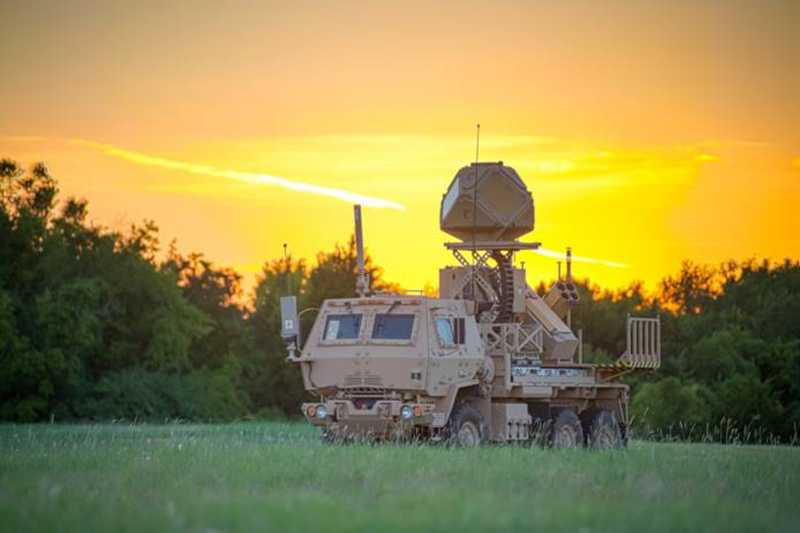
Raytheon is now working with the US Army to perform live-fire exercises as it evaluates Coyote and receives first-hand feedback from warfighters. The Army has brought the system into the field, Laliberty noted, both in the US Central Command (CENTCOM) and in US Africa Command (AFRICOM).
‘We’re looking forward to getting some feedback from the Army, and that’ll help us improve the system as we go,’ Laliberty added.
Because adversaries can quickly and cheaply acquire and deploy UASs, providing a cost-effective solution is imperative.
On top of this, drones can also be used in populated areas, so any C-UAS response must offer low collateral damage. For these reasons, Laliberty thinks that non-kinetic effects are likely to become increasingly important in the coming years.
He added that the adversary also has a wide range of threats at their disposal, which they’re using in creative ways to disrupt operations.
Affordable and effective solutions must include a range of technologies, from sensors to C2 and effects, to enable the US and its allies to detect, track and defeat any combination of threats simultaneously.
‘To do that, you really can’t use one point solution system,’ he added. ‘You end up with a layering of defence, a federation of capabilities that you integrate and make interoperable, such that you can efficiently and effectively defend against this very broad and complex range of threats.’
More from Studio
-
![Combat-proven capabilities: How precision-strike systems are evolving for tomorrow’s battlespace (podcast)]()
Combat-proven capabilities: How precision-strike systems are evolving for tomorrow’s battlespace (podcast)
Combat-tested technology is being reshaped to counter A2/AD threats, reduce reliance on GPS and enable faster, more autonomous targeting in complex environments. In this special podcast, experts explain how the evolving threat landscape is shaping next-generation strike capabilities.
-
![Energy evolution: How laser defence systems are powering the next phase of air defence (podcast)]()
Energy evolution: How laser defence systems are powering the next phase of air defence (podcast)
Laser-based air defence is moving from promise to deployment as global threats evolve. In this special podcast, we explore how high-energy laser systems are reshaping interception strategies.
-
![Intelligence advantage: How real-time GEOINT is reshaping military decision-making (Studio)]()
Intelligence advantage: How real-time GEOINT is reshaping military decision-making (Studio)
In today’s contested operational environment, adaptability is key. The new Geospatial-Intelligence as a Service (GEO IaaS) solution from Fujitsu and MAIAR empowers militaries by enabling intelligence advantage, combining advanced technology with human expertise to deliver actionable insights.
-
![Training Together: Unlocking Educational Excellence through Military and Industry Collaboration (Studio)]()
Training Together: Unlocking Educational Excellence through Military and Industry Collaboration (Studio)
Military training is ultimately about people. At Capita, training programmes are built on close engagement with partners, delivering an educational approach that can adapt to individual needs, cultivate leadership – and drive wider cultural change.
-
![Enhancing Military Training Through Digital Technology (Studio)]()
Enhancing Military Training Through Digital Technology (Studio)
Digital technologies offer huge opportunities for defence training. However, militaries must adopt an agile approach, placing the needs of their organisations and personnel at the centre of their efforts.
-
![Layered Defence: How new technologies are enhancing armoured vehicle survivability and manoeuvrability (Studio)]()
Layered Defence: How new technologies are enhancing armoured vehicle survivability and manoeuvrability (Studio)
As modern threats evolve, armoured fighting vehicles face a new era of challenges, from loitering munitions to kinetic energy projectiles. Advances in active, passive, and reactive protection systems are crucial to ensuring battlefield dominance, freedom of manouver and vehicle survivability.











